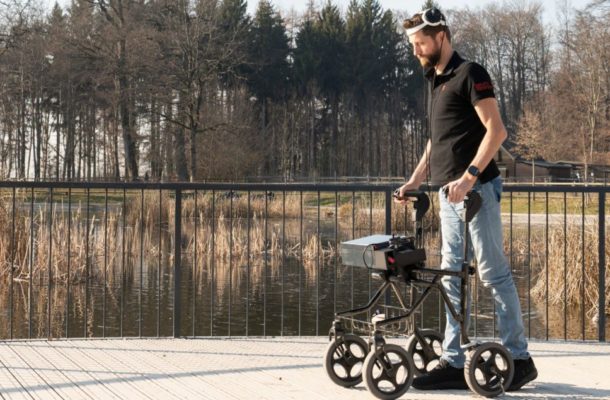In a groundbreaking scientific achievement, a paralyzed man has regained the ability to walk through the use of a wireless 'digital bridge' that reconnects his brain and spinal cord.
Discover the remarkable technology behind this medical breakthrough and its life-changing impact on the first patient. Read on to explore the future possibilities for individuals living with paralysis.
Introduction:
In a truly remarkable feat of scientific innovation, a paralyzed man has defied the odds and taken steps once again, thanks to a groundbreaking wireless 'digital bridge.
' By restoring communication between the brain and the spinal cord, this pioneering technology has given hope to individuals with spinal cord injuries.
Join us as we explore the extraordinary journey of the first patient to benefit from this medical breakthrough and delve into the intricacies of this life-altering digital connection.
The Digital Bridge:
Reconnecting Brain and Spinal Cord The 'digital bridge' is a breakthrough invention comprising two electronic implants, strategically placed in the brain and the spinal cord.
The implant positioned over the region of the brain responsible for leg movements decodes electrical signals generated during thoughts of walking.
Simultaneously, the implant placed on the corresponding area of the spinal cord enhances the connection and control over leg movement.
From Paralysis to Progress:
Gert-Jan Oskam's Inspiring Journey Gert-Jan Oskam, a 40-year-old Dutch engineer, became the first patient to undergo the transformative procedure.
Oskam had experienced a spinal cord injury due to a bicycle accident while working in China back in 2011.
After the surgical placement of the implants, Oskam witnessed astonishing progress within days, as the calibrated devices facilitated communication between his brain and spinal cord.
The Power of Thought:
Translating Intention into Action The collaborative efforts of the implants allow for the conversion of thoughts into physical action.
Oskam was thrilled by the unexpected outcome, stating that he gained control over his hips within minutes.
Through an extensive training process and dedication, he has since accomplished incredible feats such as walking, climbing stairs, and reclaiming the simple joys of socializing in a bar.
The implants have remained effective even after a year, granting Oskam newfound independence and mobility.
Collaborative Scientific Endeavor:
The Journey to Success This groundbreaking achievement was made possible through the collaboration of leading neuroscientists, neurosurgeons, and researchers from Switzerland's Lausanne University Hospital, the University of Lausanne, and the Swiss Federal Institute of Technology in Lausanne.
The French Atomic Energy Commission played a vital role in developing the implants, contributing to the realization of this extraordinary medical breakthrough.
Conclusion:
The restoration of mobility for a paralyzed individual through the implementation of a wireless 'digital bridge' marks an awe-inspiring advancement in the field of medical science.
The successful reestablishment of communication between the brain and spinal cord opens up new possibilities for those living with paralysis.
As research and innovation continue to push the boundaries of what is medically achievable, this remarkable breakthrough offers hope and renewed prospects for countless individuals around the world.


Comments